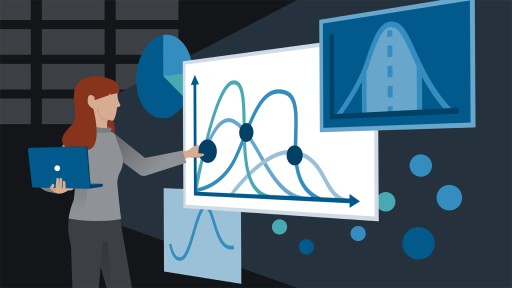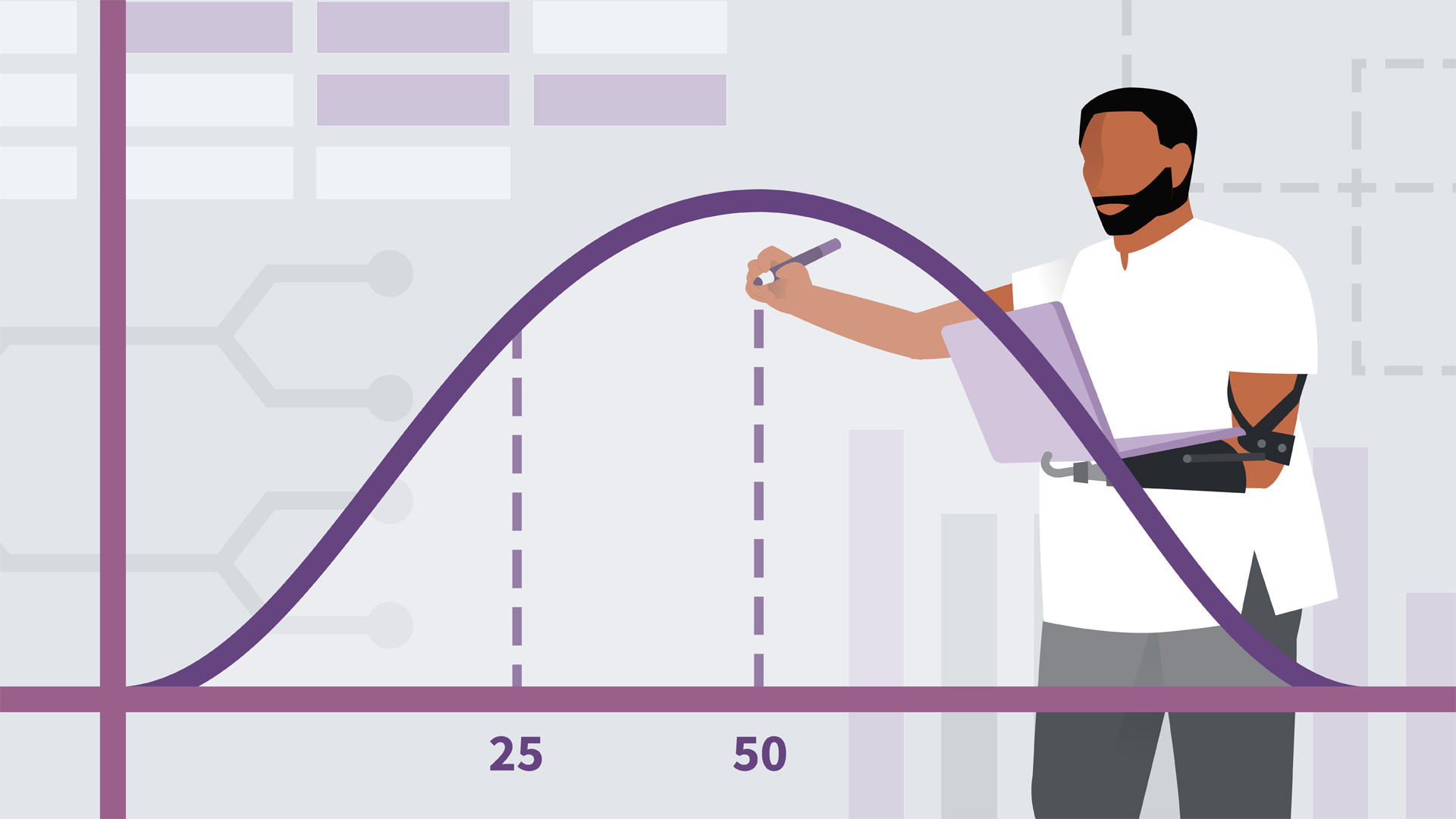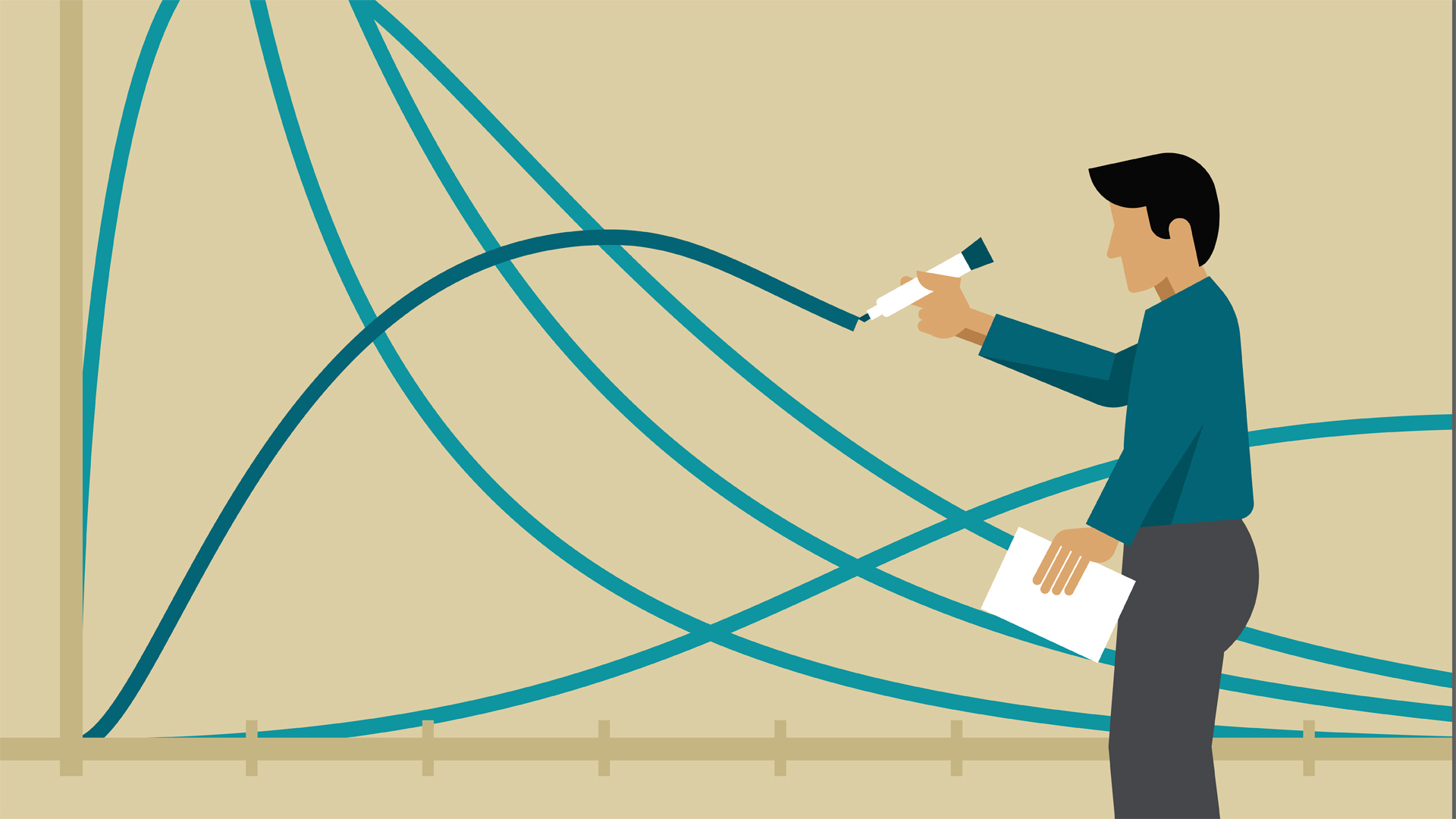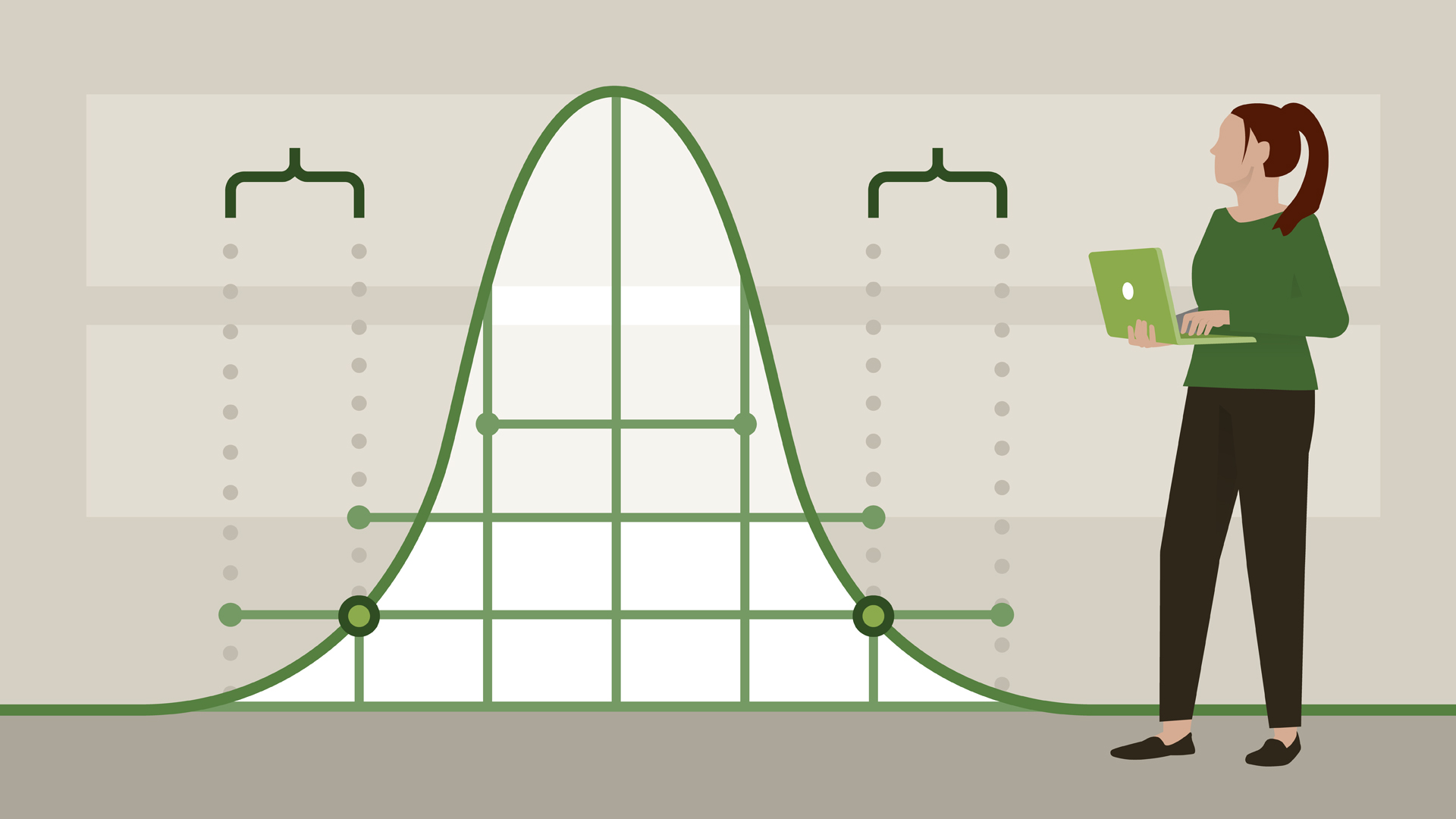
Course duration: 1,57h
Statistics are everywhere, in every industry, but they're a must for anyone working in data science, business, or business analytics. If you're in one of these specialized fields, chances are you need an advanced understanding of statistics. Complete your mastery in this course, part four in our Statistics Foundations series. Eddie Davila covers concepts such as small sample sizes, t-distribution, degrees of freedom, and more. This advanced skills training moves learners into the practical study and application of experimental design, analysis of variance (ANOVA), two-population comparisons, and regression analysis. Use these lessons to go beyond the basics and dive deeper into the specific factors that influence your own calculations and results.
Topics include:
- Analyze statistical hypotheses in comparative studies.
- Interpret experimental consistency through statistical tests.
- Calculate the significance of extreme values in hypothesis testing.
- Assess the implications of variance analysis in service quality studies.
- Illustrate the implications of slope coefficients in linear regression models.
- Evaluate the utility of the R-squared measure in explaining variance in regression models.
This course is in French only. If this is not a problem for you, by all means go ahead and apply.

Not sure if you need statistics? Think again! Statistics help with making decisions, new discoveries, investments, and predictions. For subjects ranging from political races to healthcare advancements, statistics can improve your understanding of your favorite topic. In this course, Professor Eddie Davila teaches common terms, formulas, and techniques related to probability, the area of statistics where this course focuses. Eddie explains that probability is used to make decisions about future outcomes and to understand past outcomes. He covers permutations, combinations, and percentiles, and goes into how to describe and calculate them. Eddie introduces multiple event probabilities and discusses when to add and subtract probabilities. He describes probability trees, Bayes’ Theorem, binomials, and so much more. You can learn to understand your data, prove theories, and save valuable resources—all by understanding the numbers.
Topics include:
- Define and explore the basics of probability.
- Discuss and examine permutations and combinations.
- Explain how to calculate percentiles.
- Define the concept of conditional probability.
- Introduce and use probability trees.
- Define and utilize Bayes’ theorem.
- Discuss and explore discrete random variables.
- Introduce binomials and discuss their relation to normal curves.
- Examine bell-shaped curves and what they represent.
Deze cursus is enkel beschikbaar in het Engels. Als dit voor u geen probleem vormt, dien dan gerust uw aanvraag in.
This course is in French only. If this is not a problem for you, by all means go ahead and apply.

Statistics is not just the realm of data scientists. All types of jobs use statistics. Statistics are important for making decisions, new discoveries, investments, and predictions. Whether the subject is political races, sports rankings, shopping trends, or healthcare advancements, statistics is an instrument for understanding your favorite topic at a deeper level. In this course, Professor Eddie Davila offers beginner-level lessons, so you too can master the terms, formulas, and techniques needed to perform the most common types of statistics. Eddie covers several examples of data and charts. He explains how to find the middle of your data set, as well as the mean and median. He introduces range, then goes into standard deviation and what to do with outliers. These techniques help you understand your data, prove theories, and save time, money, and other valuable resources—all by understanding the numbers.
Topics include:
- Introduce the concepts of mean, median, and mode.
- Explain how to calculate range.
- Explore the z-score concept.
- Define standard deviation.
- Introduce the empirical rule.
- Explore how standard deviation and normal distributions are related.
- Recognize the possible role of outliers.
Deze cursus is enkel beschikbaar in het Engels. Als dit voor u geen probleem vormt, dien dan gerust uw aanvraag in.
This course is in French only. If this is not a problem for you, by all means go ahead and apply.

Statistics are everywhere, in every industry, but they're a must for anyone working in data science, business, or business analytics. If you're in one of these specialized fields, chances are you need an advanced understanding of statistics. Complete your mastery in this course, part 3 of our Statistics Fundamentals series. Eddie Davila covers concepts such as small sample sizes, t-distribution, degrees of freedom, chi-square testing, and more. This advanced skills training moves learners into the practical study and application of experimental design, analysis of variance, population comparison, and regression analysis. Use these lessons to go beyond the basics and dive deeper into the specific factors that influence your own calculations and results.
Apply for this course
Statistics are a core skill for many careers. Basic stats are critical for making decisions, new discoveries, investments, and even predictions. But sometimes you need to move beyond the basics. Statistics Fundamentals – Part 2 takes
business users and data science mavens into practical, example-based learning of the intermediate skills associated with statistics: samples and sampling, confidence intervals, and hypothesis testing.
Eddie Davila first provides a bridge from Part 1,
reviewing introductory concepts such as data and probability, and then moves into the topics of sampling, random samples, sample sizes, sampling error and trustworthiness, the central unit theorem, t-distribution, confidence intervals (including explaining
unexpected outcomes), and hypothesis testing. This course is a must for those working in data science, business, and business analytics—or anyone else who wants to go beyond means and medians and gain a deeper understanding of how statistics work
in the real world.

Statistics is not just the realm of data scientists. All types of jobs use statistics. Statistics are important for making decisions, new discoveries, investments, and predictions. Whether the subject is political races, sports rankings, shopping trends,
or healthcare advancements, statistics is an instrument for understanding your favorite topic at a deeper level. With these beginner-level lessons, you too can master the terms, formulas, and techniques needed to perform the most common types of statistics.
Professor
Eddie Davila covers statistics basics, like calculating averages, medians, modes, and standard deviations. He shows how to use probability and distribution curves to inform decisions, and how to detect false positives and misleading data. Each concept
is covered in simple language, with detailed examples that show how statistics are used in real-world scenarios from the worlds of business, sports, education, entertainment, and more. These techniques will help you understand your data, prove theories,
and save time, money, and other valuable resources—all by understanding the numbers.
